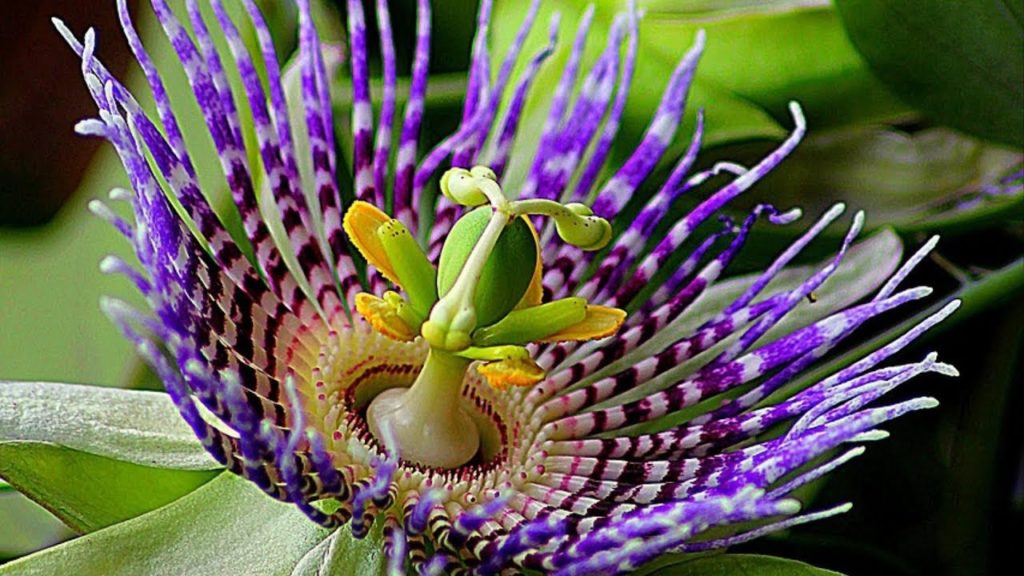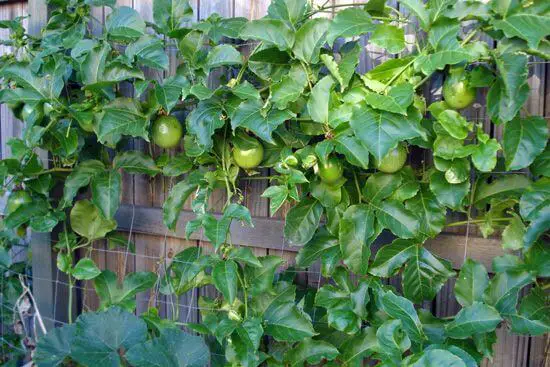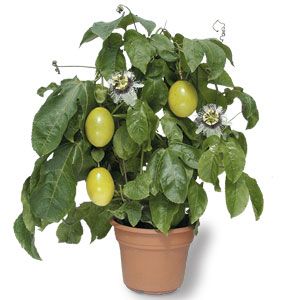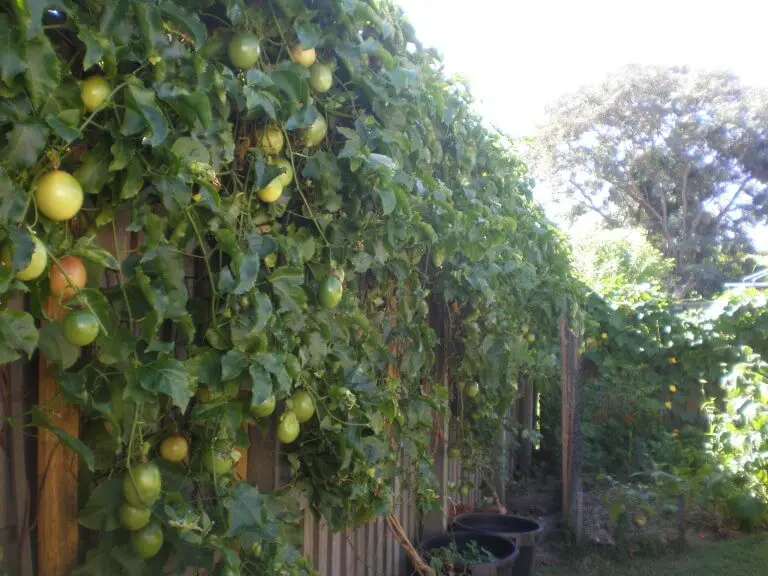Today we'll teach you how to grow passion fruit, one of the most bountiful backyard crops, that's actually pretty easy to grow! If you've ever eaten a passion fruit, you know how incredibly juicy and sweet and sour it can be, but did you know that passion fruit is also extremely healthy? Packed with vitamins and antioxidants, many consider it to be a super food! So let's get started and grow our own passion fruit!

Passiflora edulis is a species of a passion flower vine that is native to northern Argentina and Southern Brazil. The passion fruit tree mainly grows in tropical and subtropical areas, but surprisingly, will also grow almost anywhere as long as temperatures do not drop below freezing.
These fast growing passiofruit vines produce the actual fruit which you can eat, as well as the passion flower, which can range in colors from purples to reds. The fruit is usually either yellow or purple. Depending on the variety of passion fruit, they are about 5-8cm (2-3 inches) in circumference. They have a smooth and thick rind, and are filled with juicy sweet and sour seeds and juice.
Passion Fruit Varieties:
Did you know that there are at least 50 varieties of passion fruit? This is great news for those who don't live in tropical climates, because that means there are different cultivars. A great passion fruit plant variety that can withstand the cold is the Nellie Kelly, which is also resistant to pets. For those in warmer climates, plant the Panama variety. Let's take a quick look at the two main different varieties of passion fruit: there is yellow passionfruit and purple passionfruit!
- Passiflora edulis is a purple passionfruit, while passiflora edulis f. flavicarpa is the golden/yellow passionfruit, which is sometimes also called the tropical passionfruit.
- Purple passionfruit is usually the sweeter of the two varieties, and is native to Brazil.
- Yellow passion fruit is a little bigger than purple passionfruit and slightly more sour.
- If you live in a tropical or subtropical climate, you'll want to grow yellow passionfruit, but if you live in a climate where temperatures can drop, opt for purple passionfruit.
How to Grow Passion Fruit:
Climate:
Passion fruit can be grown and will thrive in subtropical and temperate regions. In fact, passion fruit grows so easily, it will adapt to almost any temperature as long as frost does not reach it! Remember to grow purple passion fruit in cooler climates, and golden passion fruit in tropical and subtropical climates.
Time to Plant:
It is best to start planting in early spring. Make sure all danger of frost has passed, and that the soil has warmed up a little bit. This subtropical fruit needs warm soil and warm temperatures in order to thrive. Position your passion fruit vine somewhere where it will receive full sun and away from strong winds. Don't forget that the passion fruit plant is a vine, so it's best to plant it near a fence or trellis. Additionally, the planting space should be free from weeds and the roots should have plenty of room to spread out. The passion fruit vine system is quite extensive, so giving your plant lots of room is essential.
Soil:
The passion fruit tree prefers soil that is rich in organic matter, well drained, and has a pH of 5.5 to 6.5. Work some organic matter into the soil before planting, and also make sure that soil is warm. Additionally, remove any weeds or other plants from the area.
Time to Harvest:

It can take anywhere between 12-18 months for a passion fruit tree to start making fruits. If you live in a tropical or subtropical climate and the conditions are ideal, you can get a passion fruit tree to produce within just 6 months.
Seed or Vine?
You can grow your own passion fruit tree from either seed or vine, but vine is always the best and easiest way, especially if you live in an area where it may get a little cold at times. You can find passion fruit vines at your local gardening center and even online. Today, we'll show you how to grow passion fruit from vine, but if you do decide to grow it from seed, the same rules will apply!
Planting:
Plant your vines in a warm spot with full sun. Passion fruit trees love the sun, and so it's important to make sure they have as much sun as possible. They also develop a deep root system, so make sure before you plant, you choose a spot where they can spread out and grow. Passion fruit also loves to climb, so an ideal spot would be next to a wire fence. Make sure that the area is free of other trees, plants, or weeds. Passion fruit needs tender loving care, so make sure to give it a beautiful, free area where it can climb and spread out. A productive vine will take off within just a few days!
Feeding:

Passion fruit thrive on a diet of pelletised chicken manure and organic matter, or any fertilizer that's designed for flowering fruit. Spread a mix of fertilizer and mulch over the entire ground where the vines are planted, as well as over the entire root system. Feed it fertilizer in the spring and then every four weeks through summer. Remember to water well after fertilizing.
Watering and Pruning:
Passion fruit likes a lot of water, especially in its early stages, so regular watering is a must. Make sure to water regularly and to check the soil for dryness. Passion fruit does not really require pruning, but most people do so to control its size and spread. Also, the more sunlight filters through, the faster the fruits will ripen, so if you do prune, do so to make sure enough sunlight can enter through.
How to Grow Passion fruit in a Pot

Don't have a lot of space? Not to worry – passion fruit will still grow in a pot, and could give you some awesome shade on a balcony! Have some trellis ready, or a wire fence so that it can climb! Follow the same steps above, but just plant your seed or vine in a large enough pot. Give it fertilizer, give it sun, and give it water, and voila – this is how to grow passion fruit! You will soon be able to enjoy delicious fruit!




















